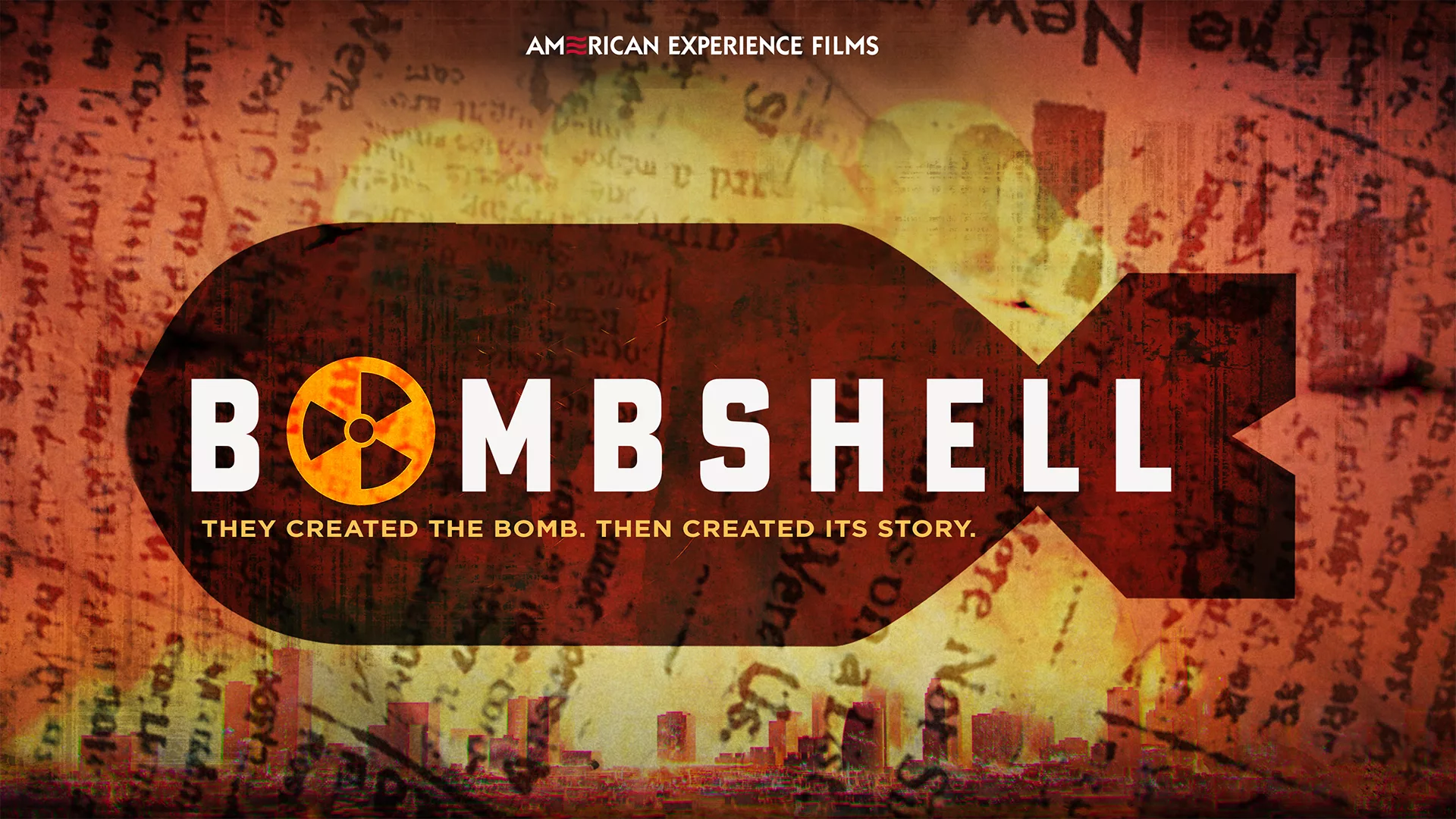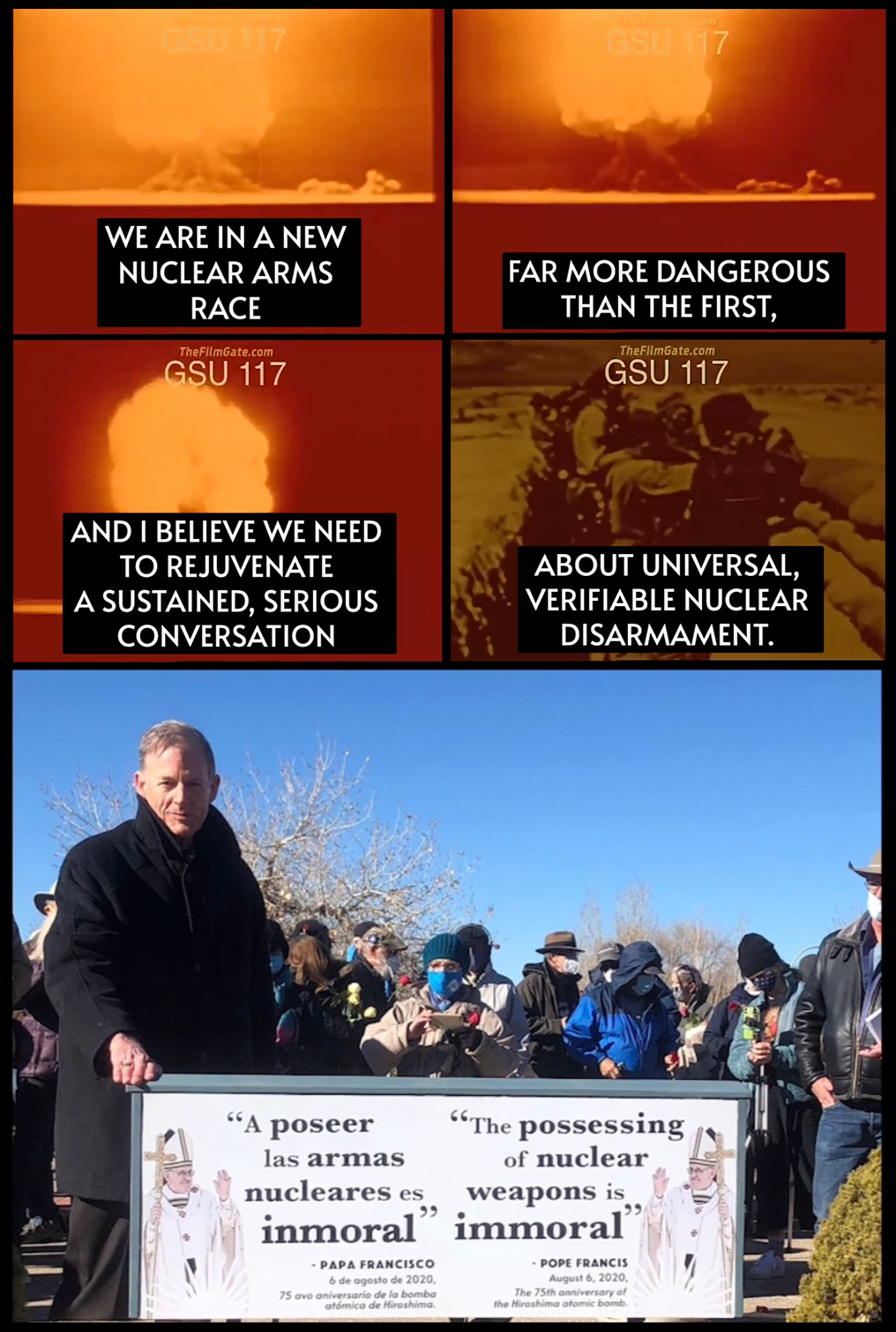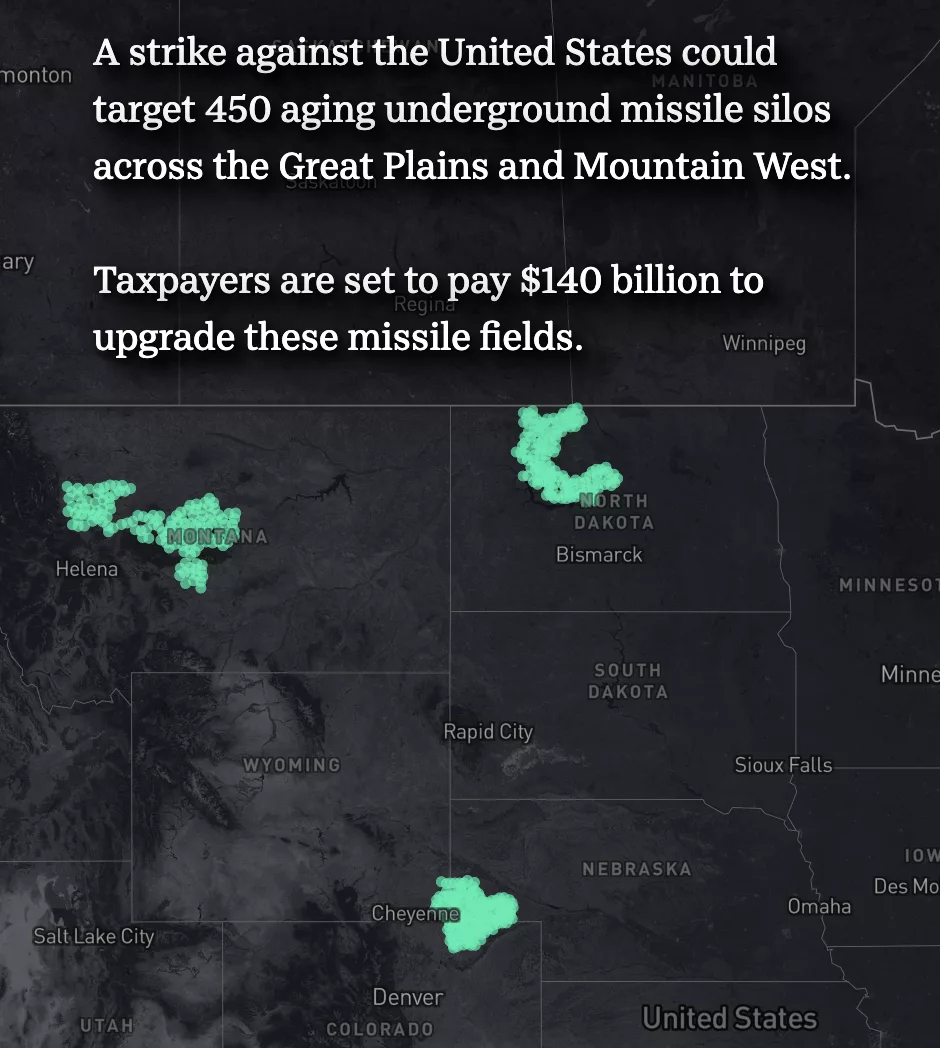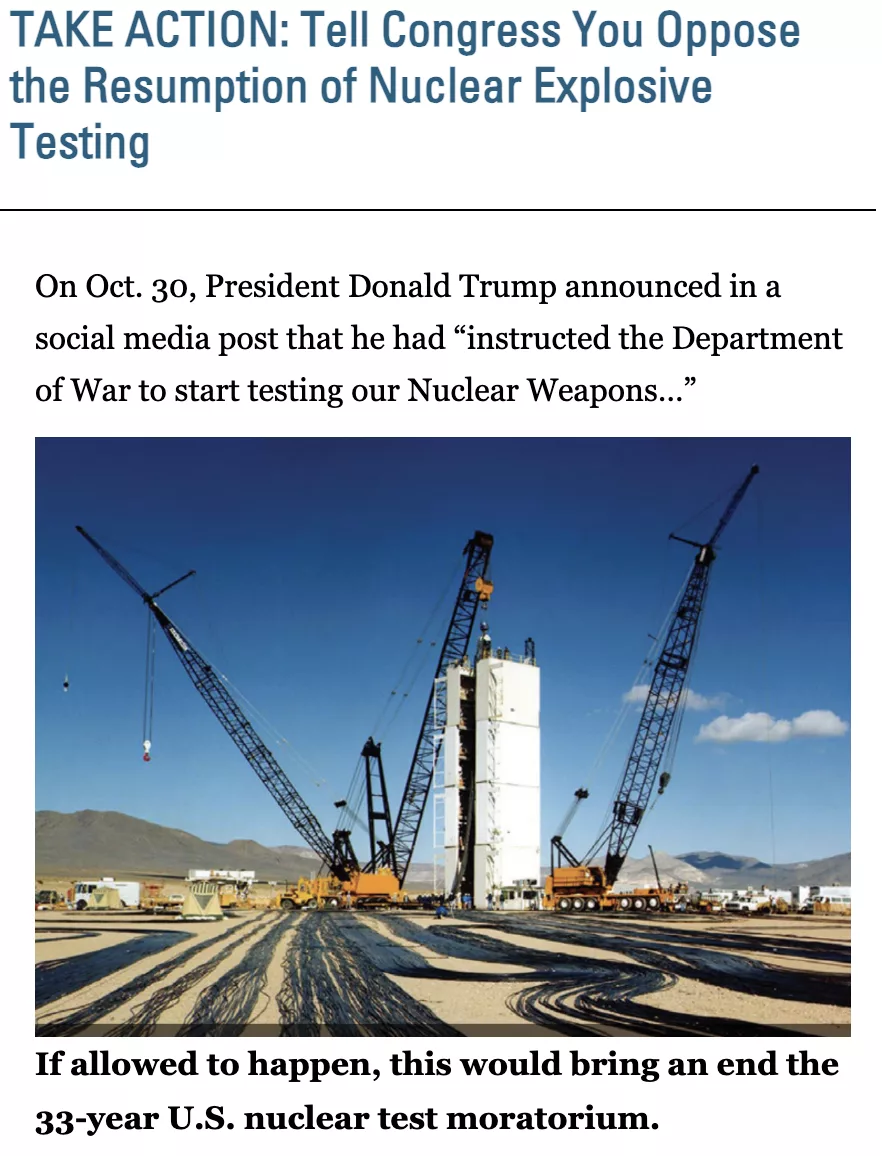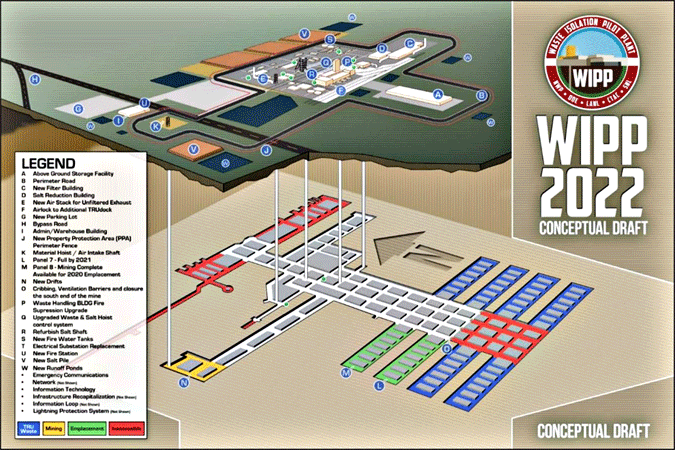QUOTE OF THE WEEK
Trump’s Talk of Nuclear Tests Recalls Fears of the Cold War
“Yes, we can learn things by nuclear testing. But when you look at the big picture, we have much more to lose by going back to testing than we have to gain.”
– SIEGFRIED S. HECKER, a former director of the Los Alamos weapons lab in New Mexico, where the first atomic bomb was created, after President Trump’s call to resume nuclear testing revived a Cold War debate. The New York Times nytimes.com
LANL’s Central Mission: Los Alamos Lab officials have recently claimed that LANL has moved away from primarily nuclear weapons to “national security”, but what truly remains as the Labs central mission? Here’s the answer from one of its own documents:
LANL’s “Central Mission”- Presented at: RPI Nuclear Data 2011 Symposium for Criticality Safety and Reactor Applications (PDF) 4/27/11
Banner displaying “Nuclear Weapons Are Now Illegal” at the entrance in front of the Los Alamos National Lab to celebrate the Entry Into Force of the Nuclear Weapon Ban Treaty on January 22, 2021
“There is nothing comparable in our history to the deceit and the lying that took place as a matter of official Government policy in order to protect this industry. Nothing was going to stop them and they were willing to kill our own people.”
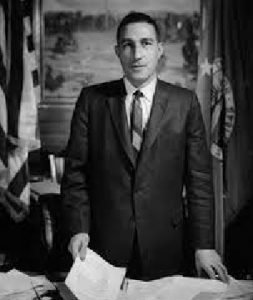
— Stewart Udall, United States Secretary of the Interior under President Kennedy and President Johnson.
He was the father of Senator Tom Udall (who ended up being a vigorous supporter of expanded nuclear weapons “modernization” plans).
Follow the Money!
Livermore FY26 Budget Request (Courtesy of Tri-Valley CAREs)
Map of “Nuclear New Mexico”
In 1985, US President Ronald Reagan and Russian President Mikhail Gorbachev declared that “a nuclear war cannot be won and must never be fought.”

New Nuclear Media: Art, Films, Books & More
Watch BOMBSHELL on PBS American Experience — streaming across all PBS-branded platforms, including YouTube, PBS.org and the PBS App!
The wait is over! BOMBSHELL is available NOW on PBS American Experience — and will be streaming simultaneously across all PBS-branded platforms, including YouTube, PBS.org and the PBS App.
A House of Dynamite review – Kathryn Bigelow’s nuclear endgame thriller is a terrifying, white-knuckle comeback
★★★★★: Amid a global arms race, ending the threat of nuclear war — and even the testing of nuclear weapons — is imperative, said the Holy See’s diplomat to the United Nations.
By Peter Bradshaw, The Guardian | September 2, 2025 theguardian.com
Kathryn Bigelow has reopened the subject that we all tacitly agree not to discuss or imagine, in the movies or anywhere else: the subject of an actual nuclear strike. It’s the subject which tests narrative forms and thinkability levels.
Maybe this is why we prefer to see it as something for absurdism and satire – a way of not staring into the sun – to remember Kubrick’s (brilliant) black comedy Dr Strangelove, with no fighting in the war room etc, rather than Lumet’s deadly serious Fail Safe.
Thank You For All Your Support
We are living in the most dangerous times since the 1980’s. The world is in a new nuclear arms race, arguably more dangerous than the last because there are now multiple nuclear actors, new cyber and hypersonic weapons and artificial intelligence.
NEW & UPDATED
Watch BOMBSHELL on PBS American Experience — streaming across all PBS-branded platforms, including YouTube, PBS.org and the PBS App!
The wait is over! BOMBSHELL is available NOW on PBS American Experience — and will be streaming simultaneously across all PBS-branded platforms, including YouTube, PBS.org and the PBS App.
New Mexico, Department of Energy at odds over cleanup halt at LANL waste site
In a December public meeting, the field office’s manager indicated approval from the Environment Department likely wasn’t needed to defer the study and cleanup of Area C. According to the compliance decree, “NMED approval is not required” in several cases to change the status of an area to deferred, as long as the Department of Energy complied with other requirements.
Environment Department spokesperson Drew Goretzka wrote in an email to The New Mexican a site can be deferred in one of four cases, including if it is involved in active operations and if the amount of time needed for deferment is assessed.
The department doesn’t agree those requirements have been met, Goretzka wrote, “resulting in a breach of the Consent Order.”
By Alaina Mencinger amencinger@sfnewmexican.com | January 9, 2026 santafenewmexican.com
 The U.S. Department of Energy has put cleanup of a hazardous waste disposal site at Los Alamos National Laboratory on hold, a decision that seems to have drawn the ire of the New Mexico Environment Department.
The U.S. Department of Energy has put cleanup of a hazardous waste disposal site at Los Alamos National Laboratory on hold, a decision that seems to have drawn the ire of the New Mexico Environment Department.
The state last year was planning to hold a public hearing in early 2026 on how to handle legacy waste left behind at Material Disposal Area C, according to a letter from an official in the Hazardous Waste Bureau.
The Department of Energy, however, had already made up its mind: Any corrective actions at the site would have to wait due to ramped-up operations near Area C. The public hearing is now on hold until the conflict over the deferment of corrective actions is settled, according to an Environment Department spokesperson.
The 11-acre waste site, in use from 1948 to 1974, is located within Technical Area 50 along Pajarito Road. Its six disposal pits were used for various types of waste, including radioactive materials and heavy metals.
Chicago Tribune Editorial: Tick, tick goes the Doomsday Clock
“It would be madness to resume nuclear testing, let treaties lapse and expand arsenals that already could wipe out the planet. Diplomacy worked for decades, mainly because of an understanding that avoiding nuclear war was essential to humanity’s future. Today’s global leaders need to start acting accordingly.”
By The Editorial Board | Chicago Tribune – January 6, 2026 chicagotribune.com
 This month, the Bulletin of the Atomic Scientists at the University of Chicago is scheduled to announce whether the hands of its famous Doomsday Clock will move closer to midnight. It feels like a safe bet that Armageddon is drawing nearer today than it has in a long, long time.
This month, the Bulletin of the Atomic Scientists at the University of Chicago is scheduled to announce whether the hands of its famous Doomsday Clock will move closer to midnight. It feels like a safe bet that Armageddon is drawing nearer today than it has in a long, long time.
The Doomsday Clock started almost 80 years ago, when physicists who developed the Bomb grew alarmed at its use against Japan to end World War II.
Between the late 1940s and the early 1990s, nuclear war wasn’t a remote possibility: It almost happened, repeatedly, as America and the Soviet Union fought the Cold War. Chicago’s atomic scientists moved the hands of their clock from seven minutes to midnight at its start in 1947 to just two minutes to midnight as of 1953, when the U.S. and Soviets started testing enormously powerful hydrogen bombs.
*The image above differs from the article photo due to usage rights.
NEW INTERACTIVE PIECE from USA TODAY: THE NUCLEAR SPONGE — & Much More!
Screenshot from USA Today article January 5, 2026 usatoday.com/graphics/interactives/us-nuclear-weapons-expansion-fallout-map/
THE NUCLEAR SPONGE
Fallout maps show what could happen if America’s nuclear missile silos were attacked
By Davis Winkie, Ramon Padilla, Stephen Beard, Karina Zaiets and Carlie Procell, USA TODAY | usatoday.com
U.S. nuclear strategy revolves around the idea of the “triad.” Each of the military’s methods for delivering a nuclear strike represents a leg – the air leg (bomber planes), the sea leg (missile submarines) and the land leg (silo-based intercontinental ballistic missiles).
In recent years, arms control advocates have argued that the land leg of the triad is useless compared with its peers and makes the world a more dangerous place. The root of the debate is the vulnerability of the underground silos: An enemy can – and probably would – destroy them in a first strike against the United States.
Those opposed to land-based nuclear missiles, such as Daryl Kimball of the Arms Control Association, say that this vulnerability would push the president into a “use-or-lose logic” if he or she believed the United States were under nuclear attack. If the president launched a nuclear missile counterattack under a false warning, the results would be catastrophic.
The naysayers also highlight the cost of replacing the existing 1970s-vintage fleet of 400 Minuteman III missiles with the under-development Sentinel missiles, which the Air Force estimated will cost $140 billion (an increase from a 2020 estimate of $78 billion).
Warren, Garamendi Press Energy Secretary on Mismanagement and Taxpayer Waste in Plutonium Pit Production Program
Without transparency, accountability, and action around the pit program, the Department of Energy may be enabling the waste of billions of taxpayer dollars.
“In rushing to production, NNSA has developed an excessively risky program structure, with management concerns around fundamental aspects such as the cost and schedule.”
Sen. Elizabeth Warren and Rep. John Garamendi | warren.senate.gov – garamendi.house.gov
Washington, D.C. — In a new letter, U.S. Senator Elizabeth Warren (D-Mass.) and Representative John Garamendi (D-Calif.), both members of their respective Armed Services Committees and of the Nuclear Weapons and Arms Control Working Group, are urging Department of Energy Secretary Chris Wright to review the scope of and the need for the nuclear weapon plutonium pit production program, and pause the program’s Savannah River site until the National Nuclear Security Administration (NNSA) has established guardrails to prevent additional waste of taxpayer funds.
In August, the Department of Energy (DOE) launched a special study into NSSA’s leadership and management of the plutonium pit production mission. The lawmakers believe that, if properly conducted, the study will find that years of mismanagement have put billions of taxpayer dollars at risk with an unrealistic pit production schedule and goals.
“The Trump administration is blindly spending tens of billions of dollars to produce plutonium pits for nuclear weapons without a real budget or plan,” said Senator Warren. “This program is already years behind schedule and over budget, and Congressman Garamendi and I are urging the Secretary of Energy to conduct a vigorous review to rein in years of waste and mismanagement.”
“For years I have called for Congress to take action to fix the failing plutonium modernization effort. Congress has continued to pour billions of dollars into efforts to restart production with arbitrary targets,” said Congressman Garamendi. “This letter cuts to the core of the matter and asks necessary questions of NNSA, including about the questionable management and faulty assumptions underlying the program. I eagerly await their response, along with the results of the Department of Energy’s 120-day special investigation.”
The lawmakers raise concerns about how, years into this program, it is still unclear what the pit production program’s schedule and full cost will be. The Government Accountability Office recommended NNSA create a master schedule to comply with its best practices, but the agency has yet to produce one…
Livermore Lab Uses Trump Executive Order Gutting Environmental Laws to Push Through Enhanced Plutonium Utilization without Public Input
A November notice from the U.S. Department of Energy’s (DOE) National Nuclear Security Administration (NNSA) erases the previously announced public involvement requirement and thereby fast-tracks increased plutonium use at its Lawrence Livermore National Laboratory after decades of limits protected the public from potential risks.
News from our friends at Tri-Valley CAREs | trivalleycares.org
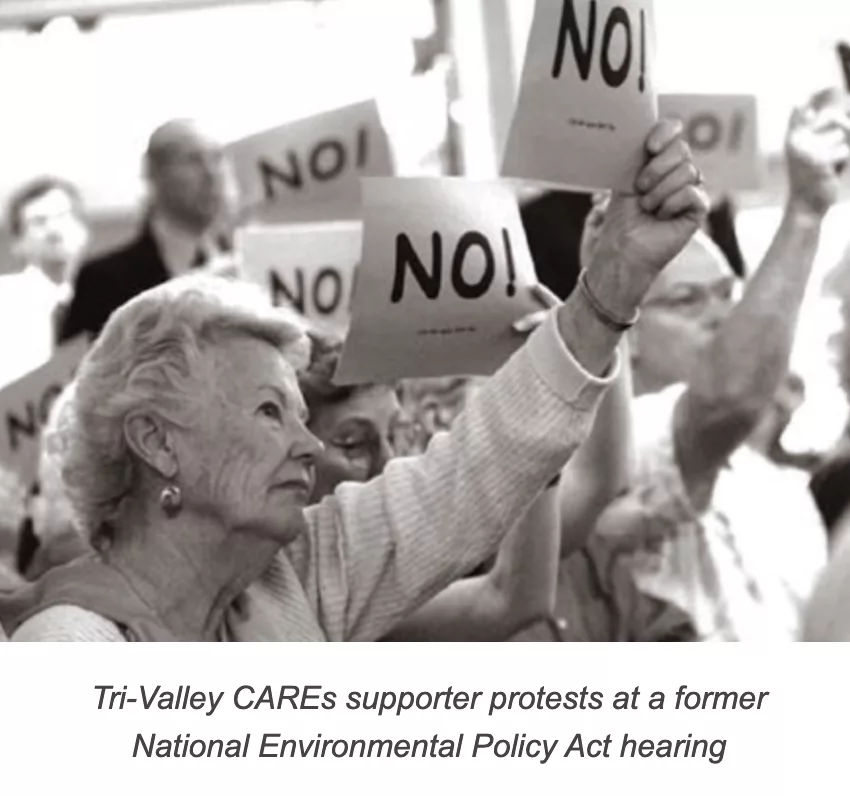 First announced In January 2025, the NNSA proposal for “Enhanced Plutonium Facility Utilization” at the Livermore Lab was to include a “Draft Supplemental Environmental Impact Statement” (SEIS) according to its Federal Register Notice. It specifically stated that, “NNSA will prepare a Draft SEIS. NNSA will announce the availability of the Draft SEIS in the Federal Register and local media outlets. NNSA will hold one or more public hearings for the Draft SEIS. Any comments received on the Draft SEIS will be considered and addressed in the Final SEIS.”
First announced In January 2025, the NNSA proposal for “Enhanced Plutonium Facility Utilization” at the Livermore Lab was to include a “Draft Supplemental Environmental Impact Statement” (SEIS) according to its Federal Register Notice. It specifically stated that, “NNSA will prepare a Draft SEIS. NNSA will announce the availability of the Draft SEIS in the Federal Register and local media outlets. NNSA will hold one or more public hearings for the Draft SEIS. Any comments received on the Draft SEIS will be considered and addressed in the Final SEIS.”
Now the agency has reneged on this promise, instead fast-tracking directly to a Final SEIS and a Record of Decision without any further opportunity for public input!
DOE using its own land to help pair AI centers, nuclear reactors
The Energy Department wants to build nuclear-powered artificial intelligence data centers on federal land using new public-private partnerships.
By Kelly Livingston and Allison Mollenkamp | rollcall.com
Co-locating advanced nuclear reactors with data centers on DOE sites is part of the Trump administration’s bid to accelerate the development of both technologies, sources say, as research efforts tease out their “symbiotic relationship.” But questions remain about how these projects could affect local communities and the actual timeline for bringing more nuclear power online.
DOE first announced its intention to use federal land for data center development and co-location in early April with a request for information to gauge industry interest. According to the RFI, the department intends to begin construction at the selected DOE sites by the end of the year, with operations beginning by the end of 2027.
Lawmakers introduce bill to cancel $100 million University of Michigan data center grant
The University of Michigan has failed to act transparently or coordinate with local officials on data center project, says state Rep. Jimmie Wilson Jr.
“Eighty-four percent of the lab’s 2026 budget request is for nuclear weapons work, according to the nonprofit Nuclear Watch New Mexico.”
By Brian Allnutt | planetdetroit.org
Michigan State Rep. Jimmie Wilson Jr. (D-Ypsilanti) introduced legislation Thursday to rescind a $100 million state grant for the University of Michigan and Los Alamos National Laboratory’s data center project in Ypsilanti Township.
The university has been unwilling to offer community benefits or consider another site for the data centers, Wilson said.
“The University of Michigan has not been fully transparent with this project and has refused to collaborate with the Ypsilanti Township officials throughout this planning process,” Wilson said in a statement to Planet Detroit.
Ypsilanti Township officials say the university misled state officials about the size of the project when applying for the $100 million grant, and passed a resolution earlier this month seeking to unwind the funding.
…
Petition highlights Los Alamos’ nuclear weapons work
A petition signed by over 700 University of Michigan employees, faculty, and students urges the school to cancel the $1.2 billion project and halt its partnership with Los Alamos, arguing the project will harm the environment, negatively impact low-income communities, and help advance harmful nuclear weapon and artificial intelligence technologies.
Catholic bishops remind political leaders that nuclear weapons are immoral
On August 5, the two American Cardinals present in Japan delivered stirring words from the Hiroshima World Peace Memorial Cathedral, whose bricks contain ashes from the atomic bomb…
“If our gathering here today is to mean anything, it must mean that in fidelity to all those whose lives were destroyed or savagely damaged on August 6, 80 years ago, we refuse to live in such a world of nuclear proliferation and risk-taking,” said Cardinal Robert McElroy of Washington. “We will resist, we will organize, we will pray, we will not cease, until the world’s nuclear arsenals have been destroyed.”
By John Wester | thebulletin.org
In August, a group of American Catholic Church leaders—including Cardinal Blase Cupich of Chicago, Cardinal Robert McElroy of Washington, DC, Archbishop Paul Etienne of Seattle, and me, the Archbishop of Santa Fe—traveled to Japan to mark the 80th anniversary of the atomic bombings of Hiroshima and Nagasaki. There, we joined our Japanese counterparts—Bishop Mitsuru Shirahama of Hiroshima, Archbishop Emeritus Mitsuaki Takami of Nagasaki, and Archbishop Michiaki Nakamura of Nagasaki—in commemorating the destruction of their cities. Takami is a hibakusha (atomic bomb survivor); he was in his mother’s womb on August 9, 1945, when his city of Nagasaki was bombed. His maternal aunt and grandmother were both killed in the blast.
Eighty years have passed. But the existential threat posed by nuclear weapons is still with us—and it is growing worse every day. In 2019, Pope Francis elevated the Catholic Church beyond conditional acceptance of so-called deterrence. He declared that the mere possession of nuclear weapons is immoral. Nevertheless, the nuclear powers are now spending enormous sums of money on “modernization” that will keep nuclear weapons virtually forever. Meanwhile, in the United States, taxes are being cut to benefit the rich, and economic inequality and homelessness are exploding. This situation is deeply immoral and counter to the Catholic Church’s teachings on social justice.
SEE MORE ON SANTA FE ARCHBISHOP JOHN WESTER’S MONUMENTAL WORK ON NUCLEAR DISARMAMENT HERE:
Nuclear Weapons Issues & The Accelerating Arms Race: December 2025
Nuclear weapons:
The government is running on a Continuing Resolution (CR) until the end of January. It’s possible to have another shutdown depending on how tough the Dems want to be. The legislative process is starting to move again, with the annual Defense Authorization Act up first and then appropriations. Both give funding increases to nuclear weapons programs, delivery systems and Trump’s “Golden Dome.”
Cost overruns in nearly all things remains the rule. Golden Dome could cost up to $4 trillion, be destabilizing and never be 100% effective. Putin has already taken steps to circumvent it and China may well be doing the same, particularly with hypersonic delivery systems. The arms race continues, likely to be accelerated by artificial intelligence as well.
Nuclear weapons testing: No specific new developments but this article by ex-LANL Director Sig Hecker is good:
| Lessons From Los Alamos |
| Last month, U.S. President Donald Trump rekindled a decades-old debate about nuclear testing. “Because of other countries testing programs,” he wrote on social media, “I have instructed the Department of War to start testing our Nuclear Weapons on an equal basis…” A return to testing at this time would likely benefit U.S. adversaries more than it would the United States. Worse still, it might rekindle an even greater and broader arms race than in the first few decades of the Cold War. |
| Siegfried Hecker | Foreign Affairs |
| Read More |
Article continued:
“My greatest concern about resuming full-scale nuclear testing is that it will fuel another dangerous arms race at a time when global tensions among the great powers are high. Engaging in another arms race is contrary to Trump’s comment that “it would be great if we could all denuclearize, because the power of nuclear weapons is crazy.”
Instead of suggesting an immediate return to nuclear testing, then, Trump should focus on returning to arms control measures to ensure strategic stability with Russia and with China. Hopefully, these measures would lead to a reduction in U.S. and Russian nuclear forces and reduce incentives for China to increase its arsenal. For nuclear testing, he should help erect the highest possible barriers for any country to test by leading an effort to ratify the CTBT. To settle the question of evasion of low-yield tests or hydronuclear experiments, the president and his counterparts in Beijing and Moscow would need to show the political will to agree on a verifiable low-yield limit. That will almost surely require onsite inspections, which were demonstrated to be possible in 1988.
The bottom line is that even though the United States could derive important benefits from resumed nuclear testing, it would lose more than it stands to gain.”
Endless Nuclear Waste Storage in NM?? Not On Our Watch…
Keep up with the Stop Forever WIPP Coalition to learn how to take action against the Federal Government’s Plan to Expand WIPP and keep it open indefinitely.
Visit the Stop Forever WIPP Coalition’s website and social media:
Website: www.StopForeverWIPP.org
Facebook: facebook.com/StopfvrWIPP
Twitter: twitter.com/stopforeverwipp
Instagram: instagram.com/stopfvrwipp
Stay Informed of All Permit-Related Happenings at WIPP! Sign Up for Updates:
The New Mexico Environment Department maintains a Facility Mailing List to which you can add your name and address to get the latest information – just email Ricardo Maestas at the New Mexico Environment Department at ricardo.maestas@state.nm.us and ask to be added to the list. Or mail your request with your mailing address to:
Continue reading
Waste Lands: America’s Forgotten Nuclear Legacy
The Wall St. Journal has compiled a searchable database of contaminated sites across the US. (view)
Related WSJ report: https://www.wsj.com














